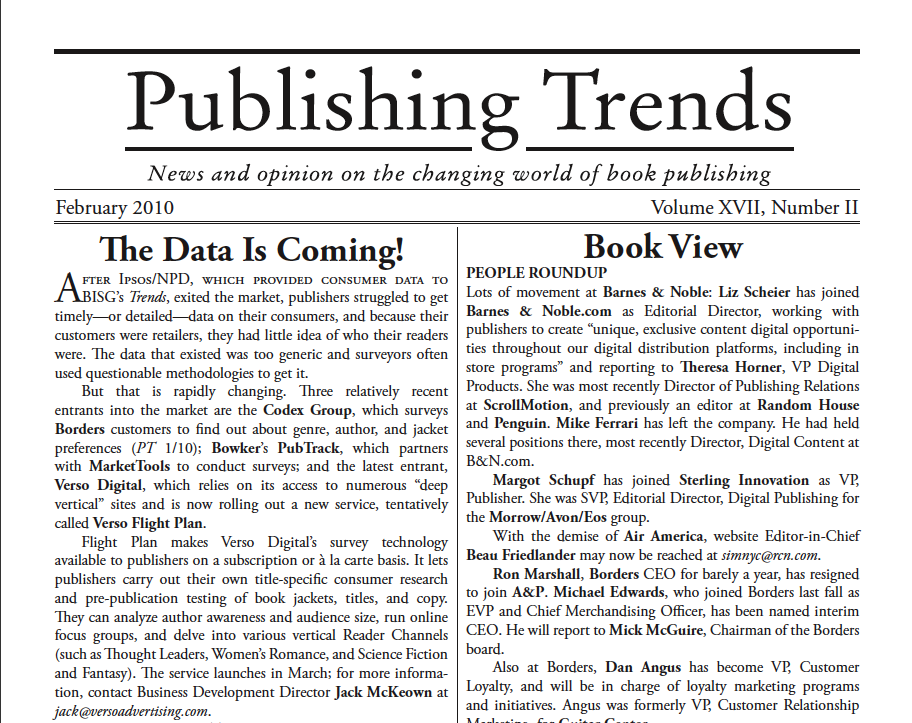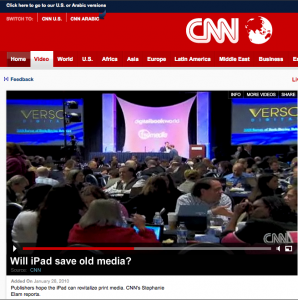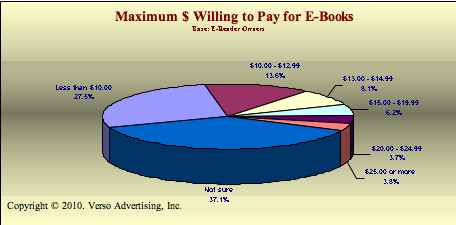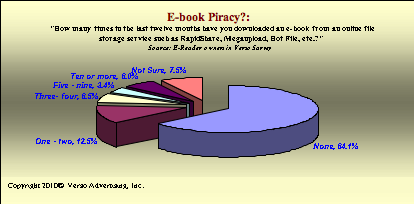We were honored that the American Bookseller Association asked our own Jack McKeown (alias @bookateur) to present the keynote at this year’s Winter Institute — and excited at the chance to expand on the “Indie Mindshare vs. Marketshare” meme that is developing out of the first Verso Survey of Book-Buying Behavior. After the great conversations that started at Digital Book World, we knew independent bookstores would have a lot to say about our results. And did they ever! The twitter activity was off the charts and is still rolling a week later (thanks to @jchristie for creating the archive). See below for a small sampling of Winter Institute press and tweets that mention Verso’s Survey.
Some of the Press
Bookselling This Week wrote, “For 90 minutes on Thursday morning at the Winter Institute, booksellers zeroed in on the provocative aspects of consumer demographics and book-buying preferences offered by Jack McKeown…”
The day after the keynote, Shelf Awareness called it a “well-received breakfast keynote [that] many booksellers said gave them both hope and ideas for concrete action.”
Publishers Weekly reported that “Jack McKeown’s keynote on Verso Advertising’s survey of consumer book-buying habits was a relief . . . [highlighting] potential opportunities for independents to be in the digital space.”
In their wrap-up of the Winter Institute, Shelf Awareness wrote, “After the first day of sessions on technological trends, many booksellers felt overwhelmed and feared an e-future that would bypass bookstores. But the next morning, the mood changed, beginning with a presentation by Jack McKeown…”
The news was even picked up in Australia. From the PNP Booksellers Blog: “Even though [the Verso Survey] was about US readers there is a tonne of relevant information for the Australian market…..”
Some of the hundreds of Tweets
Verso’s stats about indie mindshare are definitely heartening #dbw [full results here: http://bit.ly/bR5WEQ ] –@vsandbrook, 2/11/10
Thoughts from #WI5: from the Verso survey: How can indies convert mindshare into marketshare? — @corpuslibris, 2/9/10
RT @permanentpaper Reader stats A+ RT @DBerthiaume: Complete #WI5 presentation Verso survey results http://www.versoadvertising.com/survey –@WNBA_NATIONAL 2/8/10
Hey indies! RT @DBerthiaume Complete #WI5 slide presentation of Verso survey results now up at http://www.versoadvertising.com/survey/ — @vertigobooks 2/8/10
Beyond thrilled to be hearing ebook convo based on DATA, not just feelings and anecdotes. Many thanks to @bookateur. #Wi5 /via @bookavore @oblongirl 2/5/10
RT @BooksellersNZ: #Wi5 check out www.versoadvertsing.com/survey for insightful research of importance to booksellers — @KatMeyer 2/5/10
Feel much more encouraged & excited on #wi5 day two! :) — @AvidBookshop 2/4/10 (tweeted after Verso Survey Presentation)
Over 45% of males 18-34 download pirated copies. Bad boys. Whatcha gonna do? #wi5 — @yrstrulyREL 2/4/10
Hooray, data bears out that a large chunk of people are interested in bundling. Hope pubs saw this at DBW. #Wi5 — @bookavore, 2/4/10
RT @AvidBookshop: Thinking the same!RT @bookavore: Search engine marketing needs to be priority for indies. Good thing I went to a panel on it yesterday. #Wi5 –@JogglingBoard, 2/4/10
RT @bookavore: “Think about older market as cash cow to pay for experimentation with younger market.” #Wi5 –@NVbibliophile, 2/4/10
Interestingly, much of @bookateur’s #wi5 keynote applies to niche publishing, too. “Community, convenience and price.” –@glecharles, 2/4/10
Cannot tell last time I’ve seen “hissy fit” in PowerPoint. <3 @bookateur. Good job doing #s in early AM. #wi5 –@SarahRettger, 2/4/10









